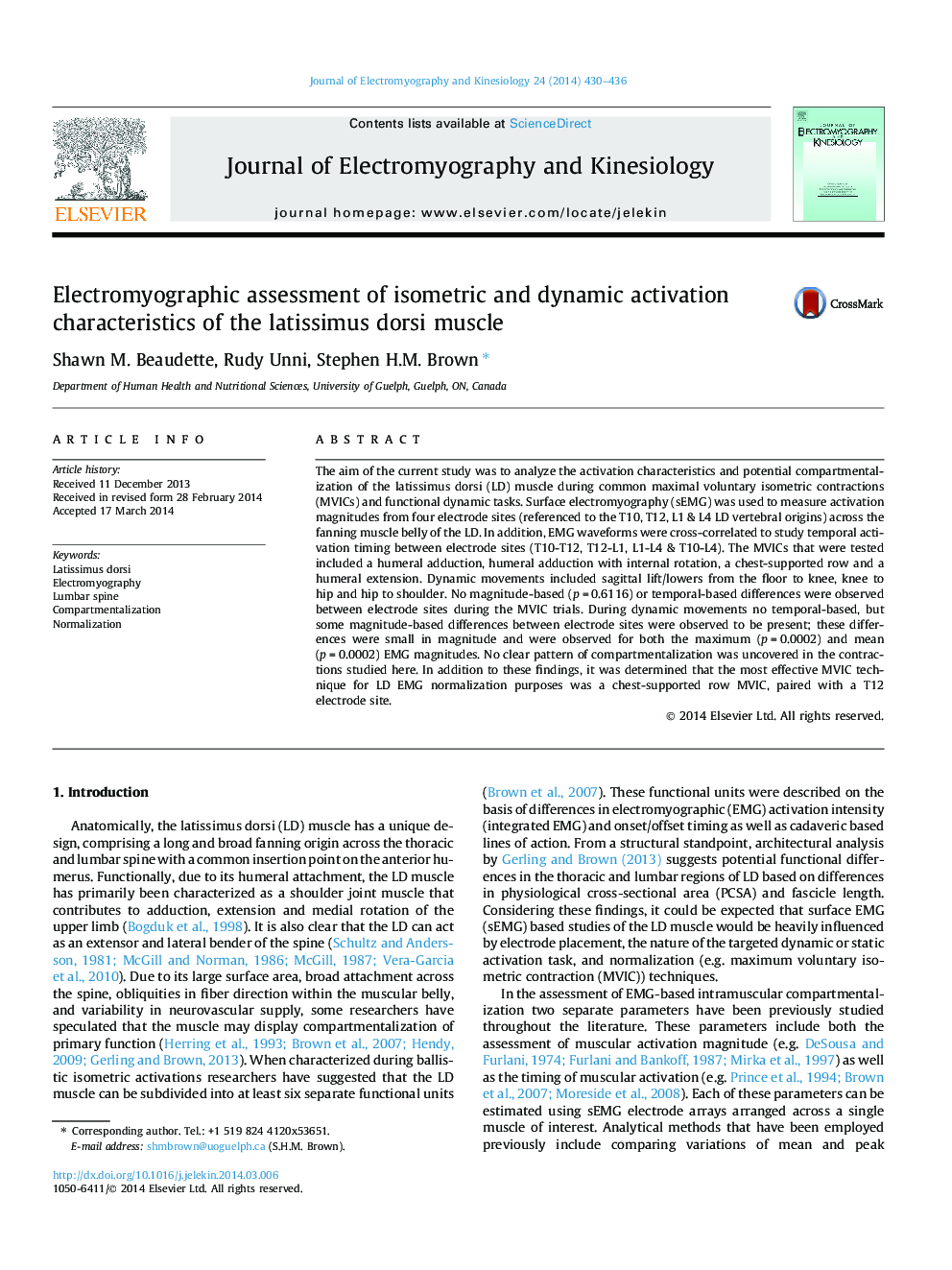| Article ID | Journal | Published Year | Pages | File Type |
|---|---|---|---|---|
| 6210504 | Journal of Electromyography and Kinesiology | 2014 | 7 Pages |
The aim of the current study was to analyze the activation characteristics and potential compartmentalization of the latissimus dorsi (LD) muscle during common maximal voluntary isometric contractions (MVICs) and functional dynamic tasks. Surface electromyography (sEMG) was used to measure activation magnitudes from four electrode sites (referenced to the T10, T12, L1 & L4 LD vertebral origins) across the fanning muscle belly of the LD. In addition, EMG waveforms were cross-correlated to study temporal activation timing between electrode sites (T10-T12, T12-L1, L1-L4 & T10-L4). The MVICs that were tested included a humeral adduction, humeral adduction with internal rotation, a chest-supported row and a humeral extension. Dynamic movements included sagittal lift/lowers from the floor to knee, knee to hip and hip to shoulder. No magnitude-based (p = 0.6116) or temporal-based differences were observed between electrode sites during the MVIC trials. During dynamic movements no temporal-based, but some magnitude-based differences between electrode sites were observed to be present; these differences were small in magnitude and were observed for both the maximum (p = 0.0002) and mean (p = 0.0002) EMG magnitudes. No clear pattern of compartmentalization was uncovered in the contractions studied here. In addition to these findings, it was determined that the most effective MVIC technique for LD EMG normalization purposes was a chest-supported row MVIC, paired with a T12 electrode site.
